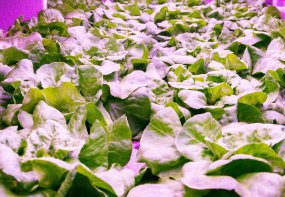
Terms to Know in Aquaponics - Part II
Last year, we posted a few key terms to know in aquaponics, and based on the response and request for more classroom related content, we have put together an additional list of terms that are helpful when teaching (and learning) about aquaponics.
Here are a few key terms worth taking the time to review and share to better understand balancing and managing an aquaponic system:
- Bloom – It is common to hear the word “bloom” when referring to flowers. The term can actually take on multiple meanings. When talking about “bloom” one may be describing the blooming stage of a flowering plant, the actual flower bloom itself, or the process or appearance of a flower when it’s blossoming. For our purposes, the term is used in the context of a plant’s life stages, and the bloom stage comes just after the vegetative stage; this stage is often referred to as the “flowering stage”.
- Crop Rotation – Crop rotation can be an effective way to make use of your grow space. Crop rotation is the systematic planting of various crops in a predetermined order over several years within the same grow space. The process is useful in maintaining nutrients, reducing soil erosion (not a concern in aquaponics), and preventing plant diseases. The rotation schedule is best defined by the types of plants being grown, as well as the climate, season and resources that are available.
- General Hardness (GH) – General hardness of water refers to the amounts of calcium and magnesium ions that are found in water. Why is this important? To put it simply, GH is important because it affects the pH level in water, and as any aquaponic gardener knows, balancing pH in a system is crucial to success - Not to mention that most fish do not thrive (or survive) in hard water. You can take the mystery out of GH by simply using a GH test kit that will measure overall concentration of calcium, magnesium, etc.; kits are easily accessible online and at gardening and aquatic stores.
- Grow Lights – The term “grow lights” refers to any lighting systems that have been designed to function in the indoor garden environment. It is a broad term that refers to lighting systems that are used for the cultivation of indoor-grown crops and indoor gardens that use supplemental lighting. While an indoor garden may receive exposure to sunlight, the term “grow lights” refers to only the artificial light source. For example, the AquaGrove system comes with grow lights which allows for year-round indoor growing, but it can also be used outdoors (with or without the supplemental grow lighting).
- Growth Rate – To put it simply, “growth rate” refers to the speed and efficiency in which a plant is developing. When tracking the success of your own aquaponic garden, measuring growth rate is important for understanding what to grow, the health of your plants, and how well (and quickly) your plants are developing. Factors that affect growth rate include temperature, nutrients, light, and water; any modification of these factors can negatively or positively impact a plant’s rate of growth. To measure growth rate, you can start by measuring and documenting the height of the plant from base to tip every few days. You can calculate the plant’s daily growth rate by using the following formula: (M2 -M1) divided by D. In this formula “M1” is the first measurement, “M2” is the second measurement, and “D” is the number of days between measurements.
We will continue to share terminology and tips related to aquaponics and sustainable gardening in future posts. To learn more about aquaponics, check out some of our other blog posts and follow us on social media (Twitter, Instagram, Facebook). To begin your own AquaGrove garden, contact Aquagrove today.
